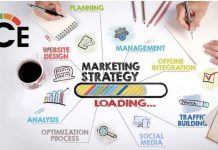In an era where sales strategies are constantly evolving, the adoption of effective tools and technologies has become crucial for success. Sales enablement is no exception. It encompasses a range of practices and platforms designed to enhance a sales team’s capabilities and streamline their operations. To stay competitive, businesses must leverage these advancements to foster knowledge, improve efficiency, and drive sales performance. Below are the key components for building a robust sales enablement strategy.
Defining Sales Enablement: What It Means for Modern Businesses

The concept of sales enablement has emerged as a foundational element for any sales-driven organization. At its core, it involves equipping sales teams with the necessary tools, content, and information to sell more effectively. This approach not only empowers sales professionals but also aligns sales and marketing efforts, ensuring a cohesive company message across all channels.
Advanced sales enablement supports the entire customer journey, from prospecting to closing a deal. By delivering the right content at the right time, sales teams are better able to engage leads, respond to concerns, and position products or services as the solution to customer needs. An emphasis on training and preparedness ensures that each interaction is impactful and tailored to individual client profiles.
However, the full potential of sales enablement can only be realized with a strategic selection of tools and technologies. These elements work in concert to optimize the sales process, providing data-driven insights and facilitating seamless collaboration within teams. It is this technological aspect of sales enablement that has elevated it to a key consideration for businesses seeking to improve their sales outcomes.
CRM Software: The Backbone of Sales Enablement Strategies
Customer relationship management (CRM) software stands out as the central pillar of any sales enablement strategy. This technology acts as a unified database offering a 360-degree view of customers, allowing sales teams to track interactions and gain insights into customer behaviors. CRMs help in better understanding client needs and in tailoring communication to foster stronger relationships.
Modern CRM systems incorporate advanced features like automation, which assists in routine task management, freeing up time for sales representatives to focus on building connections and closing deals. They also often come equipped with artificial intelligence capabilities, capable of forecasting sales trends and recommending actionable steps to take with prospects or existing clients.
Integration is another key facet of CRM software’s role in sales enablement. These platforms can integrate with other tools, such as email marketing software, chat services, and calendar systems, creating a centralized hub for all sales activities. This interconnectedness ensures a smoother workflow and reduces the likelihood of miscommunication or lost information.
Integrating Content Management Systems for Sales Success
Alt text: A woman in an office researching sales enablement on her computer
Content management systems (CMS) are another key component in a successful sales enablement framework. They allow for the creation, storage, and dissemination of sales materials, ensuring that content is always up-to-date and on-brand. Deploying a CMS makes the administration of content easier and more scalable as a business grows.
A CMS plays a crucial role in maintaining consistency in messaging, which is particularly important for large sales teams or those dispersed across various locations. Every team member has access to the same resources, ensuring that no matter who engages with a prospect, the information presented is homogenized.
Altogether, the success of modern sales strategies hinges on the thoughtful integration of advanced tools and technologies. From CRMs that synthesize customer data to sophisticated content management systems, the potential to enhance sales productivity and performance has never been greater. Overall, these advancements represent a shift toward a more innovative, efficient, and agile sales environment, one where enablement is not just an option but a necessity for thriving in the competitive business landscape.







